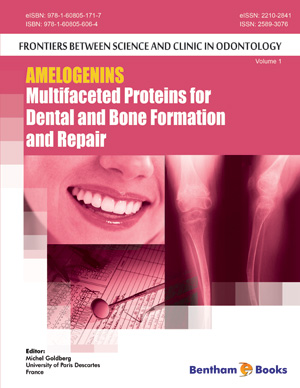Abstract
Ameloblastin (AMBN) and enamelin (ENAM) are two of the 23 secretory calcium-binding phosphoprotein (SCPP) genes on human chromosome 4q. They are members of the proline and glutamine rich group. Both ameloblastin and enamelin function specifically during tooth formation, and probably both are only critical for dental enamel formation. Both genes have been shown to degenerate in mammals that have lost the ability to make dental enamel during evolution. In mice that cannot express functional ameloblastin or enamelin during tooth formation the mineralization front along the secretory portion of the ameloblast plasma membrane fails to generate enamel mineral ribbons. A non-functional mineral crust forms over dentin that readily abrades away when the teeth erupt into function. Ameloblasts undergo pathological changes, such as mineralization of the cell layer, disorganization, and apoptosis. In this chapter we review what is known about ameloblastin structure and function and conclude that enamelin and ameloblastin are both critical for the formation of enamel mineral ribbons during the secretory stage of amelogenesis and that their primary function is at the mineralization front.
Keywords: Enamel, Enamelin, Amelogenin, Ameloblastin, Amelogenesis Imperfecta, Biomineralization, Tooth Formation






















